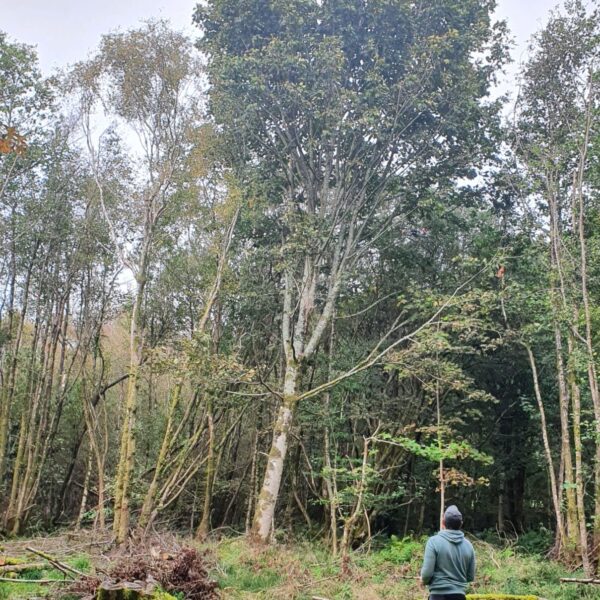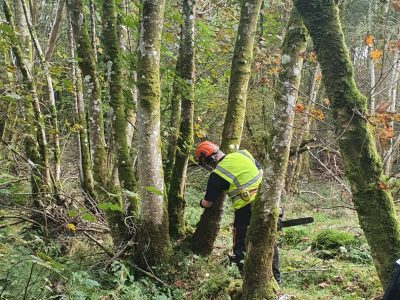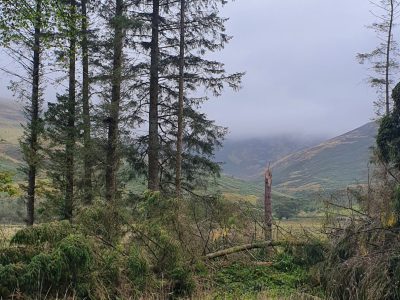Principles of Woodlots
The woodlotter pays an agreed sum annually to the landowner for the lease/licence, based on a proportion of the income generated by his/her management of the woodlot (e.g. timber or firewood sales), with allowances to the annual rental value also made by mutual agreement in terms of improvement to the condition of the woodland by the efforts of the woodlotter (e.g. invasive species removal, windthrow clearance, access/drainage improvements, tree planting/woodland expansion, development of management plans etc).
The woodlotter is responsible for compliance with all health and safety regulations in working the woodlot and also with UK Forest Standard best practice, and must maintain suitable insurance cover for all management activities proposed on the site.
Woodlots are managed on the basis of an agreed woodland management plan, approved Long Term Forest Plan or approved felling licence, with rights to harvest timber being transferred from the landowner to the woodlotter in terms of an ‘allowable annual cut’ or other agreement between the two parties.
Areas of woodland are leased or licenced for use by a landowner to a woodlotter for a fixed period (usually minimum 5 years subject to trial period), renewable by mutual agreement.
- Active management of smaller forest or woodland areas supporting livelihoods and increasing the resilience of both woodlands and local households
- Improvement and diversification of the structure and condition of woodlands through detailed and intensive silviculture by the woodlotter in agreement with the forest owners and managers.
- Supporting and developing forest-based businesses
- Diversifying forest tenure in Scotland
- Increasing engagement between local households and communities with surrounding forests and woodlands





